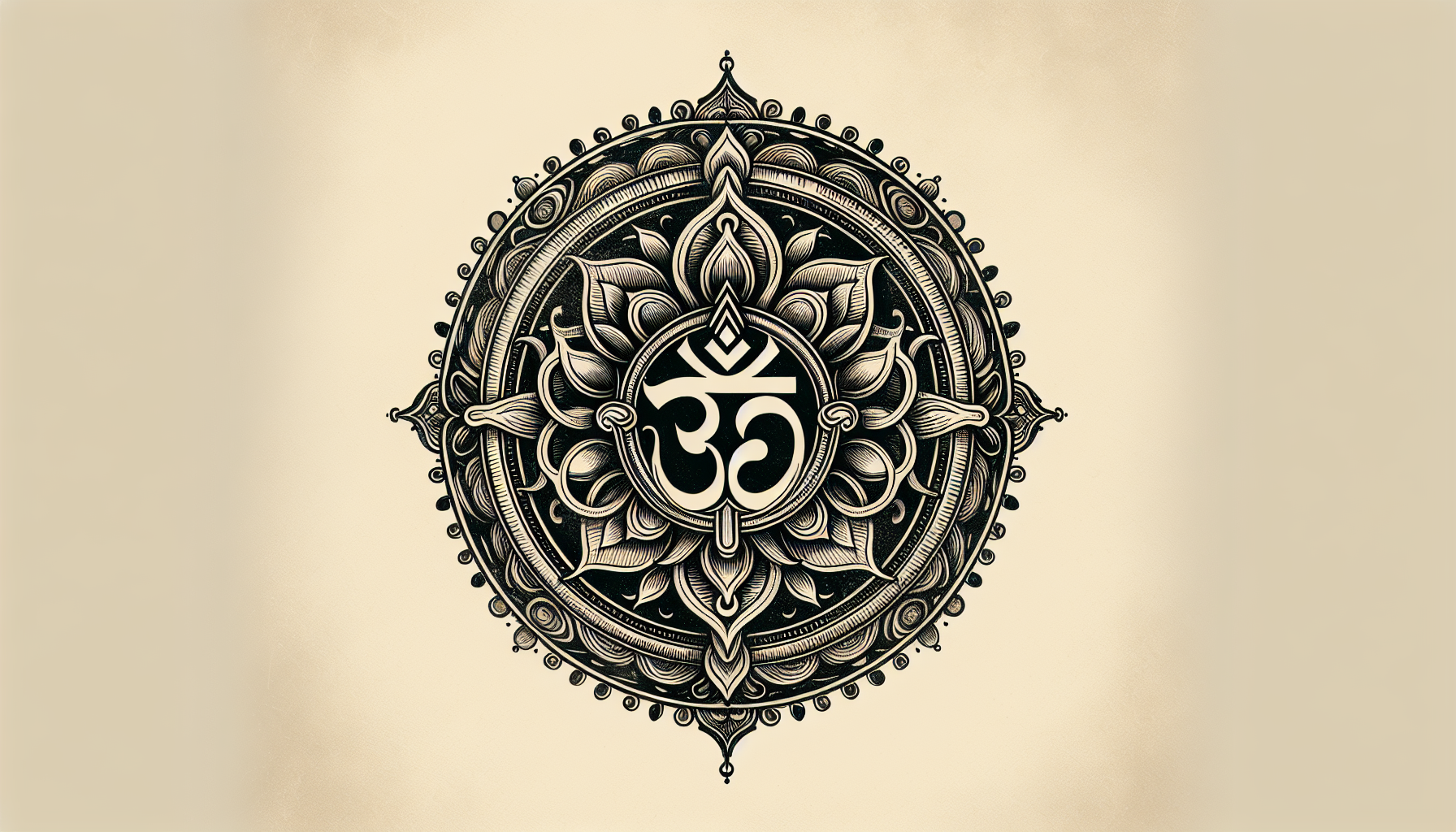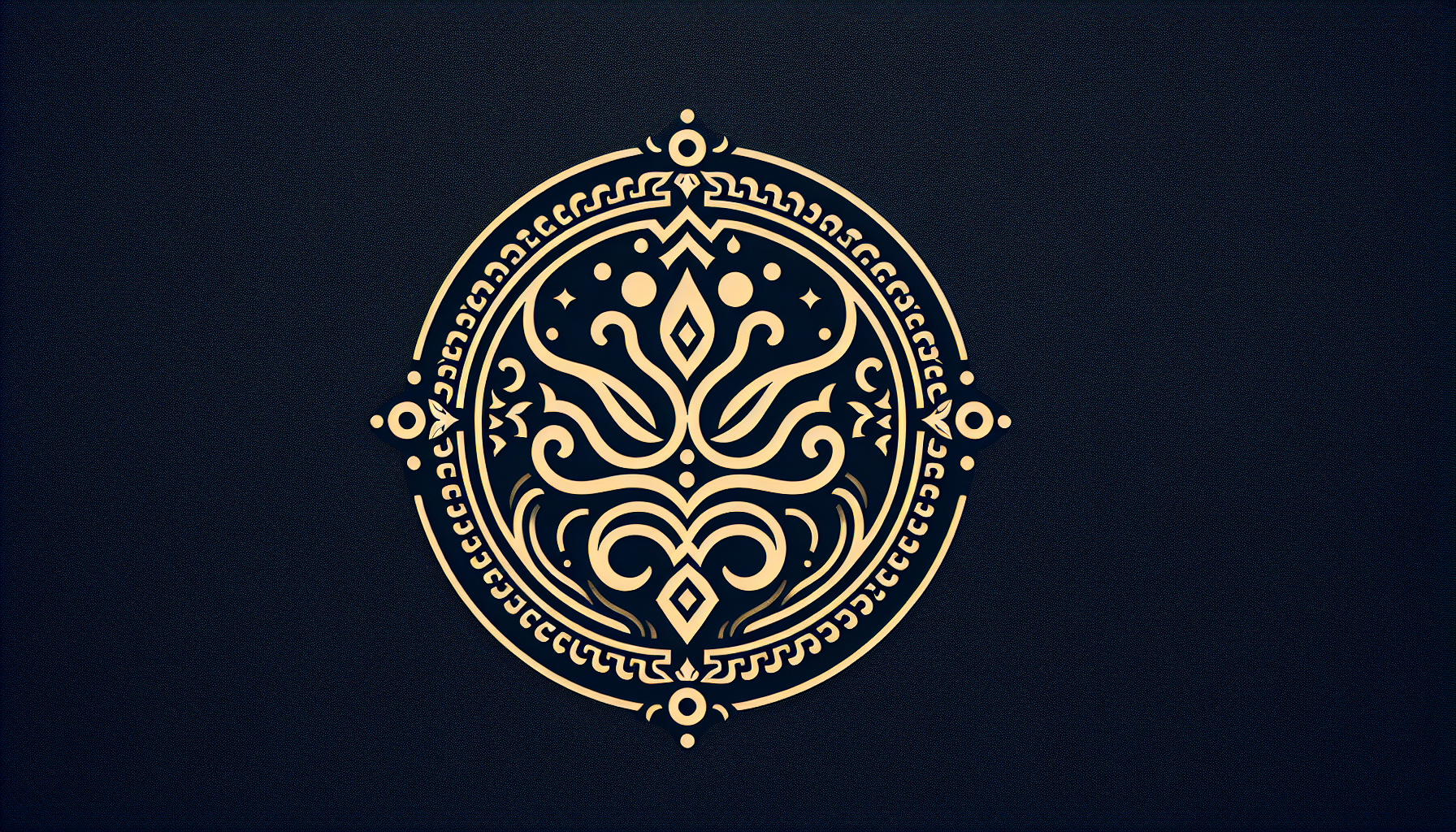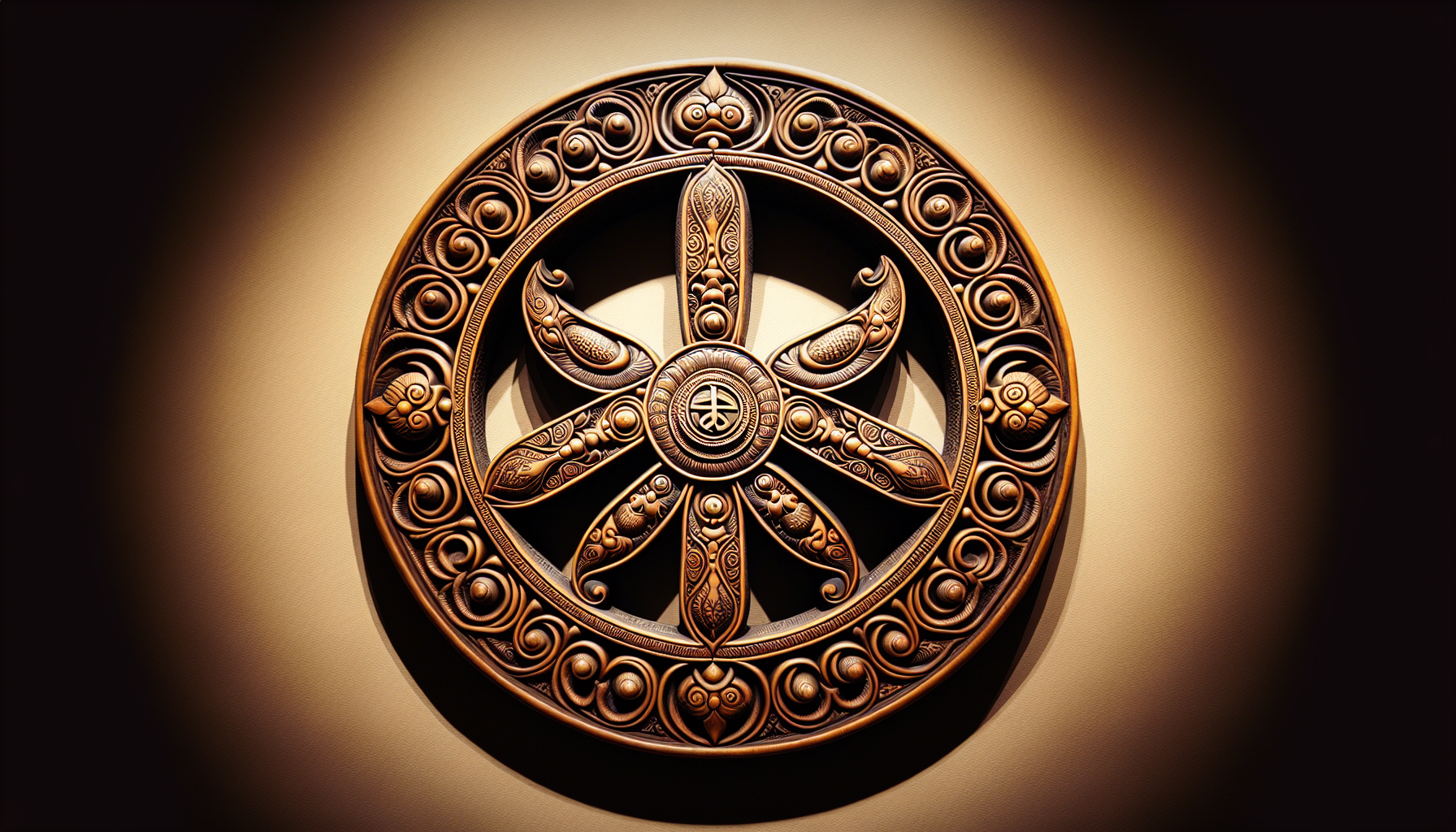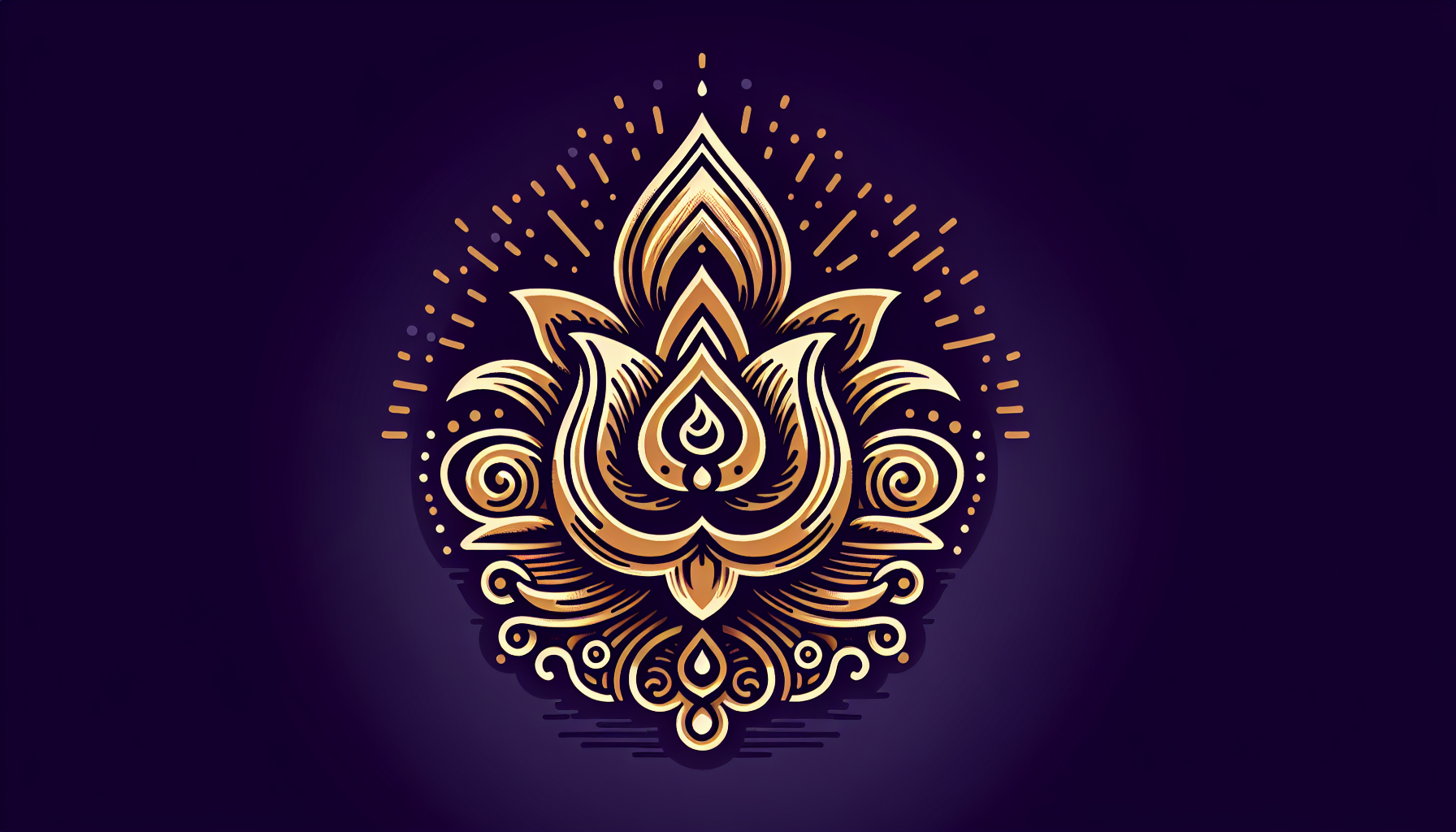Have you ever wondered about the Hindu symbol for peace and harmony? Within the beautiful and complex world of Hinduism, there exists a prominent symbol that encapsulates these values. A symbol that has been revered for centuries and holds deep spiritual significance. In this article, we will explore the meaning behind the Hindu symbol for peace and harmony, unraveling its history and shedding light on its important role in Hindu culture. So, let’s embark on this journey of discovery and delve into the mystical world of Hindu symbolism.
Table of Contents
Overview
In Hinduism, peace and harmony hold significant importance. These concepts are deeply embedded in the religion’s teachings and practices, aiming to foster a sense of tranquility and balance in individuals’ lives. Hinduism emphasizes the interconnection between humans, nature, and the divine, and the symbols associated with peace and harmony serve as powerful reminders of this interconnectedness.
Om
One of the most widely recognized symbols in Hinduism is the symbol “Om.” This sacred sound and symbol represent the ultimate reality and encompass the entirety of the universe. Om is considered the primordial sound, representing the divine within each individual.
Symbolic representation of peace and harmony
Om symbolizes peace and harmony through its unique design. It consists of three Sanskrit letters: A, U, and M, representing the Hindu trinity of Brahma (the creator), Vishnu (the preserver), and Shiva (the destroyer). The blending of these three sounds into one creates a balance that reflects the harmony sought after in Hindu philosophy.
Mantra associated with Om
The chanting of the Om mantra is believed to harmonize the body, mind, and soul, promoting peace and tranquility within oneself. The repetition of this sacred sound helps to center and calm the mind, fostering a state of inner peace. Incorporating the Om mantra into daily meditation or prayer practices can bring a sense of harmony and unity with the divine.

Swastika
Despite the unfortunate association with the Nazi regime, the Swastika has been an ancient Hindu symbol for peace and prosperity for thousands of years. It is important to separate the negative connotations from its original meaning in Hinduism.
Significance of the Swastika
The Swastika symbolizes the eternal nature of the universe and represents the cyclical nature of life, death, and rebirth. It conveys the interconnectedness of all beings, as well as the harmony between the individual self and the cosmic self. The four arms of the Swastika point in different directions, signifying the four directions, four Vedas, and the four stages of human life.
Different interpretations of the Swastika
The Swastika has different interpretations across various Hindu traditions. For some, it represents the sun, bringing light and energy to the universe. Others associate it with Lord Ganesha, the remover of obstacles, symbolizing progress and auspiciousness. Regardless of the interpretation, the Swastika universally symbolizes the pursuit of peace, prosperity, and well-being.
Occurrences of the Swastika in Hindu symbols
The Swastika can be found in many Hindu symbols, often adorning religious artifacts and temples. It is prevalent in religious ceremonies, where it is drawn or imprinted to invoke blessings and protection. The placement of the Swastika in auspicious locations signifies the desire for peace and harmony to permeate all aspects of life.
Lotus
The lotus flower holds profound symbolism in Hinduism, representing purity, beauty, and spiritual awakening. Its association with peace and harmony stems from its unique nature and the metaphorical lessons it offers.
Symbolism of the Lotus
The lotus grows in muddy waters but rises above, blossoming into a mesmerizing flower untouched by its surroundings. This resilience and purity of the lotus symbolize the potential for spiritual growth and enlightenment in the face of adversity. It serves as a reminder that one can find peace and harmony within themselves, regardless of the chaotic world around them.
Depictions of the Lotus in Hinduism
The lotus is a common element depicted in Hindu deities’ hands, symbolizing their divine attributes and their connection to peace and harmony. For instance, Lord Vishnu is often depicted resting on the bed of a lotus, signifying his role as the preserver of the universe. Goddess Lakshmi, the goddess of wealth and prosperity, is also associated with the lotus, highlighting the connection between spiritual and material well-being.
Association of Lotus with peace and harmony
The lotus’s serene and delicate nature represents peace and harmony in Hinduism. Its ability to float gracefully on water while maintaining its beauty symbolizes the state of being centered and balanced amidst life’s challenges. The lotus serves as a visual reminder to seek inner peace and embrace harmony, both within oneself and in relation to the world.

Aum
Aum, also spelled Om, is a sacred sound and spiritual symbol in Hinduism. It holds deep meaning and significance, linking it to peace and harmony.
Meaning and significance of Aum
Aum represents the primordial sound, the cosmic vibration that sustains the universe. It embodies the ultimate reality and serves as a divine connection between the individual self, the universe, and the divine. Chanting Aum is believed to create a harmonious resonance within the body, mind, and spirit, bringing about a profound sense of peace and unity.
Connection of Aum with peace and harmony
The sound of Aum resonates throughout Hindu rituals, prayers, and meditation practices, promoting a state of peace and harmony within oneself and with the external world. It is believed that by chanting Aum, one aligns their individual vibrations with the universal vibration, engendering a sense of tranquility and balance. Aum serves as a reminder of the interconnectedness of all beings, fostering a deeper understanding and appreciation for peace and harmony.
Sacred Shlokas and Mantras
Shlokas and mantras are sacred verses and chants, often recited in Hindu rituals and practices. They hold immense power and are believed to promote peace and harmony when practiced with devotion and understanding.
Recitation of shlokas for peace and harmony
Reciting specific shlokas dedicated to peace and harmony can have a profound impact on one’s well-being and state of mind. Shlokas like the “Shanti Mantra” or the “Gayatri Mantra” are commonly chanted, invoking blessings, tranquility, and the divine presence. The repetitive nature of chanting shlokas allows individuals to focus their minds, anchoring themselves in the present moment, and fostering inner peace.
Power of mantras in promoting peace and harmony
Mantras are powerful sounds or phrases with deep spiritual meanings. They can be chanted, whispered, or even internalized to invoke peace and harmony. Mantras such as “Om Shanti” (Peace), “Lokah Samastah Sukhino Bhavantu” (May all beings be happy and peaceful), or “Om Namah Shivaya” (Salutations to Lord Shiva) are frequently practiced in Hinduism. The vibrational resonance of these mantras is believed to create a positive energetic field, bringing about peace and harmony at an individual and collective level.

Peacock
The peacock, with its majestic beauty and vibrant feathers, holds profound symbolism in Hinduism. This magnificent bird is associated with peace, harmony, and spiritual transformation.
Symbolism of the Peacock
The peacock’s feathers, which beautifully fan out, symbolize the expansion and awakening of consciousness. Its elegant posture and regal appearance represent the harmonious coexistence of grandeur and grace. The peacock’s ability to dance joyfully, unfurling its feathers, symbolizes the celebration of life and the pursuit of inner peace.
Link between the Peacock and peace and harmony
In Hindu mythology, the peacock is associated with Lord Krishna and Goddess Saraswati. Lord Krishna is often depicted with a peacock feather adorning his crown, symbolizing freedom, beauty, and spiritual enlightenment. Goddess Saraswati, the Hindu deity of knowledge, art, and music, rides a peacock, mirroring the bird’s connection to creativity, harmony, and expression. The peacock’s presence in Hindu symbolism reminds individuals of the importance of embracing peace, harmony, and inner joy in their lives.
Yoga
The philosophy and practice of yoga have long been revered in Hinduism as a means to attain peace and harmony. Yoga encompasses physical postures, breathing exercises, meditation, and ethical guidelines that align the body, mind, and spirit.
Philosophy of yoga
Yoga philosophy emphasizes the union of the individual self with the universal self, transcending the limitations of the ego-driven mind. It teaches individuals to live in the present moment, cultivating self-awareness, compassion, and non-violence towards oneself and others. The philosophy of yoga encourages individuals to find inner peace and harmony by aligning their actions, thoughts, and intentions with their true nature.
Importance of yoga in achieving peace and harmony
The practice of yoga cultivates a state of deep relaxation and self-connection, fostering peace and harmony within oneself. Through physical postures (asanas), breath control (pranayama), and meditation, individuals can harmonize their bodies, minds, and spirits. Yoga encourages the release of physical tension, mental chatter, and emotional baggage, allowing individuals to experience a profound sense of tranquility and inner stillness. Regular practice of yoga provides a path to finding peace and harmony amidst the chaos of everyday life.

Rangoli
Rangoli is a traditional Indian art form involving the creation of intricate patterns and designs on the ground, using colored powders, rice, or flower petals. This art form not only adds beauty to households but also carries deep symbolism related to peace and harmony.
Traditional Indian art form representing peace and harmony
Rangoli is historically intertwined with Hindu rituals and festivals, serving as a visual representation of offerings made to deities and guests. The act of creating rangoli is an act of devotion, creativity, and focus. Whether made in front of homes or temples, rangoli designs are believed to invite positive energy, promote peace, and create a harmonious ambiance.
Symbolism behind Rangoli designs
Rangoli designs often incorporate geometric patterns, floral motifs, and sacred symbols, all of which have spiritual significance. These patterns are believed to awaken divine energy and bring blessings of peace and harmony. The vibrant colors used in rangoli reflect the vividness of life and celebration, reminding individuals of the joy and beauty that can be found in embracing peace and harmony.
Sacred Geometry
Sacred geometry is an integral part of Hindu culture, reflecting the interconnectedness between mathematics, spirituality, and the natural world. Geometric patterns, such as mandalas, hold deep symbolism related to peace and harmony.
Symbolic representation of peace and harmony in geometric patterns
Geometric patterns in Hinduism, often seen in sacred art and architecture, represent the cosmic order and the interplay between the material and spiritual worlds. The precision, symmetry, and mathematical intricacy of these patterns evoke a sense of balance and harmony. They serve as a visual reminder of the harmony and interconnectedness present in the universe and the pursuit of inner peace.
Mandalas and their significance in Hindu culture
Mandalas, circular geometric designs, are widely used in Hinduism as a tool for meditation and contemplation. Their intricate patterns provide a focal point for the mind, inviting individuals to journey within themselves and connect with their inner peace. Mandalas are created to represent the wholeness and harmony of the universe, reminding individuals of their inherent interconnectedness and the pursuit of peace and harmony in their lives.
In Hinduism, peace and harmony are not just abstract concepts but tangible ideals that are actively pursued and celebrated. The symbols associated with these values serve as powerful reminders of the interconnectedness of all beings and the potential for inner transformation. From the timeless chant of Om to the vibrant colors of rangolis and the serene beauty of the lotus, Hindu symbols inspire individuals to seek peace and harmony within themselves and radiate it into the world. By embracing these symbols and practicing the philosophical teachings of Hinduism, one can foster a deep sense of tranquility, unity, and balance in their lives.